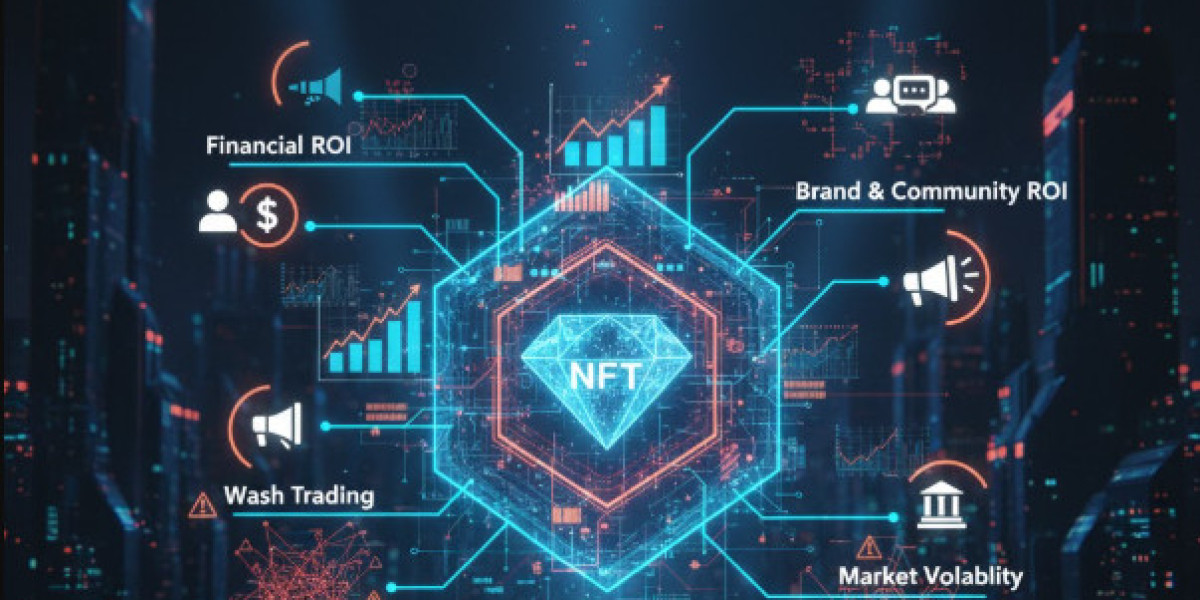With thousands of NFT projects launching every month, standing out in the Web3 marketplace has become more challenging than ever. Whether you’re a creator, brand, or Web3 startup, your NFT value proposition plays a crucial role in capturing attention and convincing collectors to buy. A strong value proposition clearly explains why your NFT matters, what makes it unique, and why buyers should invest.
Many projects fail—not because the artwork or technology is bad, but because the value offered is unclear. This guide will help you craft compelling NFT value propositions that attract buyers, drive engagement, and increase sales.
What Is an NFT Value Proposition?

A value proposition is the promise of value your NFT delivers. It's the clear statement that answers:
Why should someone buy your NFT?
What unique benefits does the holder receive?
How does it differ from other NFTs in the market?
Your value proposition must be concise, compelling, and aligned with your target audience’s motivations—whether that’s utility, art appreciation, community, investment potential, or status.
1. Know Your Target Audience
The foundation of any strong value proposition begins with understanding your ideal buyers.
Common NFT buyer motivations include:
Art collectors seeking originality
Investors looking for long-term value
Gamers wanting in-game assets
Brand fans desiring exclusive access
Community-driven buyers wanting connection
Tech enthusiasts exploring blockchain innovation
When you understand what your audience values, you can craft messaging that speaks directly to their priorities.
2. Highlight Unique Selling Points (USPs)
In a saturated market, your NFT must stand out. The Unique Selling Point is what sets your project apart.
Strong USPs may include:
Distinctive art style or rare traits
Innovative utility (staking, governance, rewards)
Real-world benefits (events, merchandise, VIP access)
Strong brand partnerships
Gaming integration or metaverse compatibility
Proprietary technology or smart contract features
Your USPs should be front and center in your marketing and pitch materials.
3. Show Clear and Tangible Utility
Utility is one of the biggest drivers of NFT sales today. Buyers want something that offers ongoing value—not just a static image.
Top utility categories:
Digital Utility:
Access to exclusive content
Play-to-earn gaming features
Governance and voting rights
Hold-to-earn passive income models
Community Utility:
Access to private groups or Discord channels
Networking and collaboration opportunities
Limited-edition drops for holders
Real-World Utility:
Physical products
Event access
Brand rewards or discounts
The clearer the utility, the more confident buyers feel.
4. Craft a Story That Resonates
Storytelling is a powerful tool in NFT marketing. A compelling narrative creates emotional connection and elevates your project beyond just art or utility.
A great NFT story should cover:
The inspiration behind the project
The mission or vision
The creator’s journey
The purpose of the collection
The future roadmap
Narratives help turn buyers into believers—and believers into long-term holders.
5. Build Trust Through Transparency
Trust is everything in the NFT world. Buyers want reassurance that the project is legitimate, secure, and built for the long term.
Ways to build trust:
Show real team profiles
Publish a clear roadmap
Be transparent about tokenomics
Share your smart contract details
Provide regular community updates
Highlight audits or security measures
The more confident people feel, the more likely they are to invest.
6. Emphasize Long-Term Value and Growth
Collectors want assets that can grow in value over time. Your value proposition should communicate how your NFT offers long-term utility or appreciation.
Long-term value drivers:
Continued utility additions
New phases, drops, or rewards
Expanding partnerships
Integration into metaverse or gaming ecosystems
Revenue-sharing models
Strong secondary market support
Show buyers that this isn’t a one-time drop—it’s an evolving ecosystem.
7. Create Scarcity and Exclusivity
Scarcity triggers demand. Clearly communicate the rarity structure and benefits of holding rare traits or limited editions.
Examples of scarcity triggers:
Limited mint supply
Tiered rarity levels
Ultra-rare 1/1 collectibles
Exclusive benefits for early holders
Scarcity increases perceived value and boosts secondary market activity.
Conclusion
A compelling NFT value proposition is essential for attracting buyers, driving sales, and building a loyal community. By identifying your audience, highlighting your USPs, showcasing utility, crafting a meaningful story, and building long-term value, you create a powerful proposition that resonates and converts.
In the fast-evolving NFT space, clarity, authenticity, and utility are what separate successful projects from short-lived ones. When you communicate value effectively, your NFTs become more than digital assets—they become experiences, communities, and investments.
Frequently Asked Questions (FAQ)
1. Why do NFT value propositions matter?
They help buyers understand what makes your project unique and why it’s worth investing in.
2. What is the biggest factor driving NFT sales today?
Utility—buyers want NFTs that offer real benefits beyond the art.
3. How can I make my NFT stand out?
Highlight unique features, tell a strong story, and offer clear long-term value.
4. What role does community play in NFT value?
Community strength often determines long-term growth, demand, and project credibility.
5. Should my NFT include real-world utility?
It’s not mandatory, but real-world benefits can significantly boost sales and brand loyalty.





